Going urban exploring in Scotland was an accident.
One of those worldwide pursuits which stays relatively secretive for a few reasons, urban exploring (or ‘UrbEx’) is the activity of those who venture inside abandoned sites of all kinds, usually armed with a torch and a camera, to see what they can find.
From disused hospitals, schools and churches to theme parks, lighthouses, old Olympic structures and sometimes entire towns, any place which seems deserted, derelict, and generally forgotten is high on an urban explorer’s list – the older and more decaying, the better.
I’ve always been fascinated by urban exploring, mainly because of the layering of different stories these places evoke. There’s the original inhabitants, usually long gone – but there’s also an unknown number of secretive visitors who leave footprints, graffiti tags, accidental possessions. It’s a complex mystery you’ll never solve.
Thanks to an annoyingly healthy respect for the law and a fear of being caught trespassing my urban exploring sessions have been minimal, but I’ve still visited a few abandoned locations. In the US, I toured the spooky cells of Philadelphia’s Eastern State Penitentiary; while travelling through Arctic Norway I slipped into the Russian timewarp of Pyramiden in Svalbard; and in northern Australia I found an abandoned castle buried in the rainforest.
The strange beauty of these ruined, forgotten sites was utterly compelling – but I’ve never actively explored an abandoned building by myself.
Until now.
We were driving alongside Loch Voil when we spotted Stronvar House.
There wasn’t much to see at first: just a towering spire, and a tumble of bricks peeking out from the dense green of overgrown trees.
But that tiny glimpse was still enough to suggest the potential for an adventure.
And so, on a drizzly afternoon in the Highlands of Scotland, Jamie swung the steering wheel and we reversed down a thin twisting path, keeping this intriguing spire in our sightline through a misted windscreen.
When our van eventually pulled up outside the pale yellow-bricked building, we realised this place was grander than we’d first thought. Ornate metal gates dotted with painted enamel flowers; curved bay windows; and a coat of arms on the upper walls, engraved with the year ‘1850’.
But however imposing the grandeur was, it couldn’t take away from the atmosphere of total abandonment. There was an overwhelming feeling that someone had left this place completely alone. Perhaps without intending to.
The rain fell heavily as we trudged into the back garden, past knee-high grass and slippery piles of roof tiles, and we spotted an open conservatory door. Suddenly I panicked that an elderly gardener was about to appear, angrily brandishing his shears.
But a closer peek inside revealed nothing but broken plant pots and rusted gardening equipment. That, and a large hole in the floorboards which led straight down to a cavernous basement.
Some of the windows had been covered up with cheap plywood, but one pane of glass had been shattered and a few others still had thick panes of glass to peer through.
Tiptoe-balancing against the fanciest bay window, I could just about see a dust-covered bike propped up against the inner wall.
I thought longingly about what else might be hiding inside this house. There were two or three floors, potentially full of neglected possessions sitting idle and alone. My imagination spiralled – but I still hadn’t really considered going inside.
Unbeknownst to me, Jamie made a decision. In one swift movement he leapt onto a window ledge and through the open window.
Before either of us had time to protest, Ernie the giant dog leapt eagerly through the frame behind his owner, hefty paws stepping gingerly on the exposed beams.
I immediately panicked about him falling eight feet to the basement – but like many dogs, Ernie is surprisingly sure-footed. Within moments both man and dog had vanished from my sight, into the bowels of this huge, deserted building.
Now, breaking and entering is not a usual pastime of mine. But this place was clearly no longer a home to anyone, there was no breaking involved, and the (relatively) easy entry made my first UrbEx opportunity somewhat hard to resist.
Besides, after Jamie and Ernie had already jumped across the threshold, what else was I going to do?
So I followed them both inside.
Read more: exploring an abandoned ghost town in the Arctic Circle
Exploring my first abandoned building
The first thing that hit me was the heavy smell of damp dust. Then the quiet.
All my senses were heightened. What if people were hiding somewhere? Builders working on the upper floors, perhaps, or a squatter sleeping in a hidden bedroom?
But despite my fluttering anxiety, Stronvar House was definitely empty.
Through every large room and past each crumbling marble fireplace, we only saw further evidence that nobody had been here in a while: wallpaper peeling from moisture-soaked walls, thick layers of dust, dozens of dead flies, broken ceilings, and a distinct lack of floorboards.
Exploring the building quickly became a game, a mystery. We were looking for clues. Who was the last person here? How long ago did they visit?
A trestle table in one corner held a few half-drunk Coca Cola bottles which we checked for their sell-by date. We noticed a few pairs of workman’s boots and a wonderfully archaic key left on a counter which, while inviting the possibility of trespassers, was surprisingly enlightening.
Thanks to an open binder filled with floorplans sitting beside the key, we were able to deduce that Stronvar used to be a guest house and before that a hotel: but all I could think about was the past inhabitants.
What other incarnations had this building had?
Read more: Culzean Castle – staying overnight in an ancient Scottish castle
We balanced our way along the beams and up a grand staircase, where dust sat thick on the bannister rails.
As Jamie walked ahead of me, I tried to imagine this place as it once was: filled with people, perhaps a wealthy family, perhaps groups of hotel guests. This building had changed hands so many times. Who had called it home?
Inventing the story of Stronvar House
Each room gave us more story fodder. We began to invent the house’s narrative: a one-time stately home which fell into disrepair, only to be converted into a beautiful loch-side hotel until something tragic occurred.
Even when the most recent owners had tried to renovate, they’d run out of money and had to abandon the entire project.
Leaving the house to slowly fall apart.
Of course, we didn’t know if this was the actual truth behind the house. But with nobody around to tell us otherwise, we had free reign to imagine anything we wanted.
I guess that’s the intrigue of many urban exploration sites: that these empty, neglected spaces are open to any number of interpretations from each and every visitor. Perhaps the very fact they’ve been forgotten and ignored gives the ‘explorer’ a sense of achievement because they’re discovering its existence again.
Read more: Paronella Park – an abandoned Spanish castle in the Australian rainforest
By the time we reached the top floor, we still didn’t have enough answers.
Our only hints that someone still cared about this house were the freshly installed roof beams. Jamie pointed out that ‘they’ had decided to at least restore the roof, knowing that without solid beams and secure tiles the entire house would be open to the elements and essentially worthless.
Save for the dust tracks of other visitors’ fingermarks, the lack of graffiti in the house was telling, too. It can’t have been abandoned for too long.
Did the owners abandon their restoration through lack of money, or lack of interest? Why had this beautiful building been left to decay in the heavy hanging mist of southern Scotland?
400 years of Stronvar House history in Scotland
Fascinated to know more, I did some research on Stronvar House. Although there’s been a building on this site since the sixteenth century, the current house was built in 1850 for David Carnegie, a Scotsman who was brought up in Gothenburg, Sweden after his Jacobite-supporting ancestors fled to Scandinavia after the battle of Culloden in 1746.
Carnegie had made millions by brewing and refining sugar in Sweden, and he eventually moved back to his Scottish homeland. He bought farmland, built a church, library and school in Balquidder, and hired the famed Victorian architect David Bryce to build Stronvar House on the site of another estate house.
The estate remained in the Carnegie family until 1952, when Stronvar House was sold to the Scottish Youth Hostel Association – and was presumably a firm favourite amongst hostelling backpackers. In the 1970s it changed hands again, this time bought by the Hoppers who ran it as a guest house until it appeared on the market in 2013.
And here’s where my interest grows sharper. Since 2007, there are various reviews on Tripadvisor which essentially chart the decline of this historical building.
“Do not stay at Stronvar House!”
In 2007 a TripAdvisor reviewer booked his family in for a week’s stay at Stronvar, but they only lasted a few days. “The smell of the mould and the musty interior was too much,” he says, “as was the brown undrinkable water. We had to move out to a bed and breakfast down the road.”
From there, the reviews become a battleground. In 2008, two different groups of visitors maintain that they loved Stronvar’s remoteness and the old fashioned atmosphere; that the brown water comes from the surrounded peaty hills; and that a house being ‘a little worn around the edges’ only added to the charm.
By 2011, the rooms are damp and there are unexpected leaks around the house. A French reviewer who rented Stronvar for ‘a rave with friends who love nature’, says that bowls are mandatory to catch the leaking water, and mentions broken toilets, mouldy walls and curtains, and tapestries destroyed by damp.
Finally, the last review is from 2016 when a clearly devastated American lady from Georgia, USA, reveals that ‘Stronvar is no more’:
This once-grand old castle was the playground of my MacGregor ancestors in the sixteenth century, and my eldest daughter and I were so looking forward to embracing a personal relic of our past.
We did think it strange that there were no recent reviews.
It was raining lightly when we drove over to Balquhidder. We followed the signs but when we finally reached our destination we could not believe the devastation we beheld.
The sun breaking through the rain clouds did nothing to ease our heartbroken tears. The entire inside of the wraith had been gutted. Piles of broken up walls were painful enough, but the remnants of kitchen gadgets, evidence of some recent life, were strewn about as well. Toward the top of the North Tower, vines could be seen growing from cracks in the stone. Some spring blooms failed to brighten the junkyard.
Supposedly, the place is scheduled for renovation. Really? We visited on a weekday and there was no activity whatsoever – just heaps of demolition. A sad day.
What do I think about urban exploring now?
Months after we drove away from Stronvar, the place still remains firmly in my mind.
Perhaps it’s because I’m fascinated by people: their pasts, their stories, and their secrets. Forgotten or not, remembered or not; they still existed. They were still real and true and once important to somebody.
So it stands to reason that I’m fascinated by the buildings they once lived in, too.
I explored Stronvar House in this current state, but I might be one of the only ones to experience it like this. In a few years it might be impossible to wander through as a pseudo-trespasser.
More crucially, it may eventually fall into such disrepair that the only solution is to knock the whole building down and start again.
The magic of somewhere like Stronvar grows stronger when I realise that many people may never see this building in the glory they’d want to – like the family who travelled from America in the hope of seeing their once-ancestral home.
Yet there’s still a strange beauty to it. I find more excitement from its abandoned state than I would have from visiting a fully working hotel, however lovely it may have been back then, or (hopefully!) will be in the future.
Even if it’s not what its owners want, Stronvar House has found an entirely new audience, precisely because of its dereliction and the intrigue of what’s been left behind.

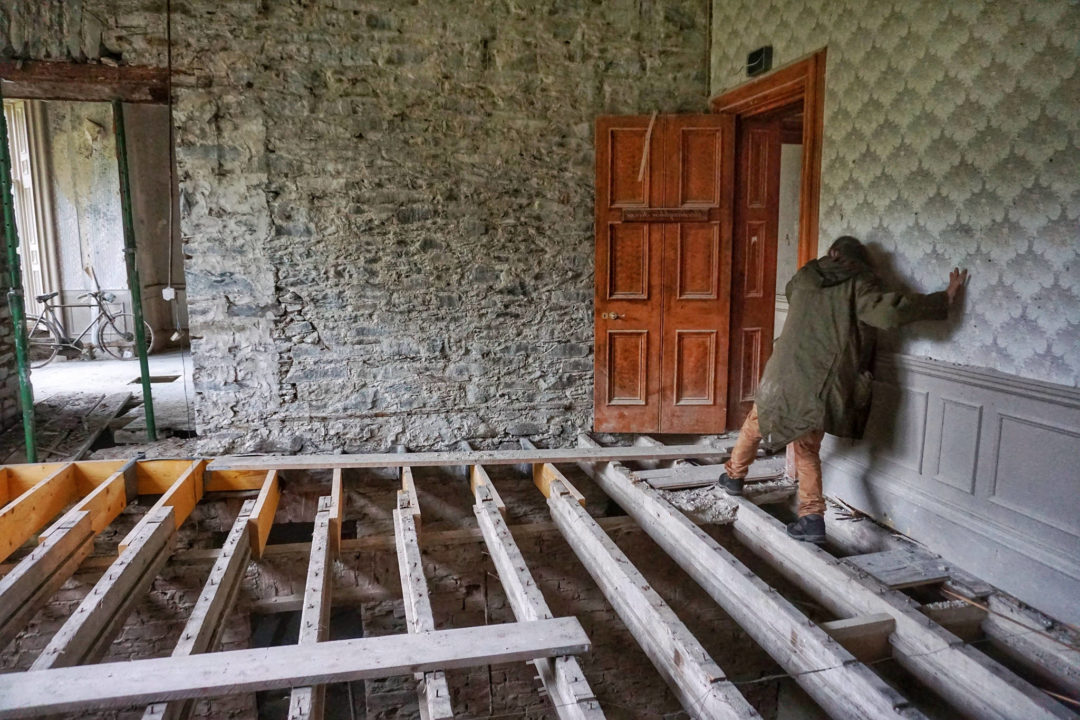
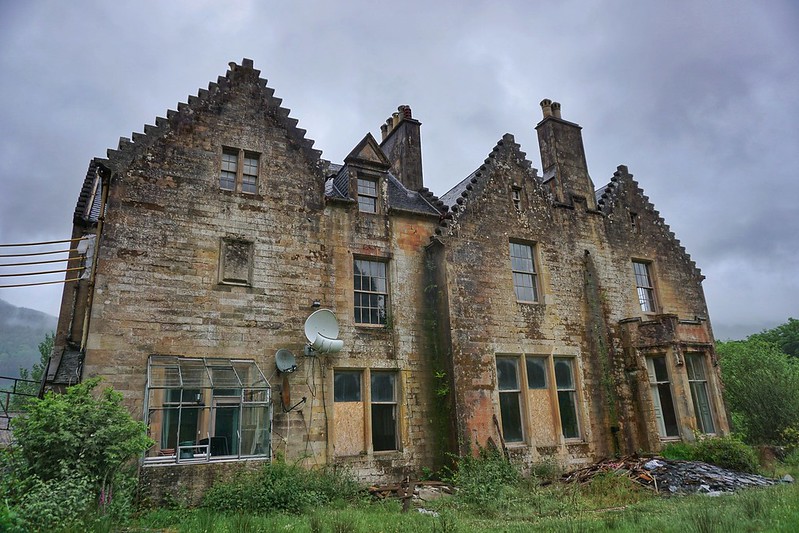
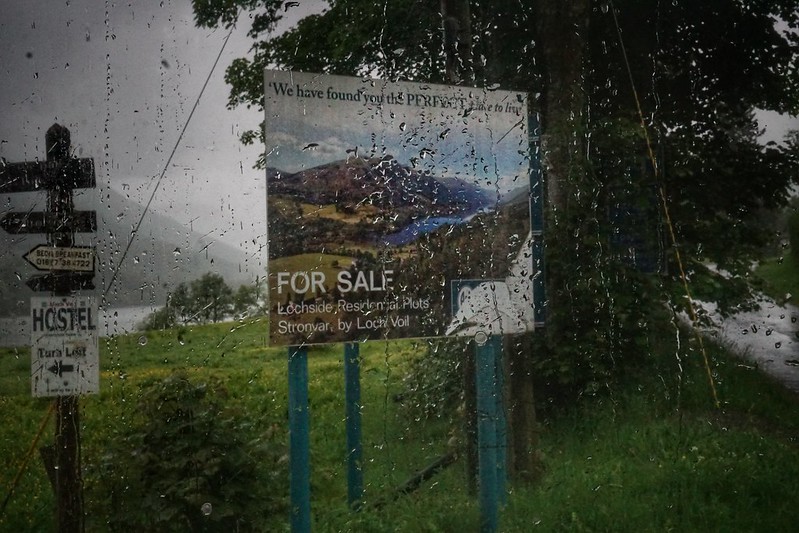
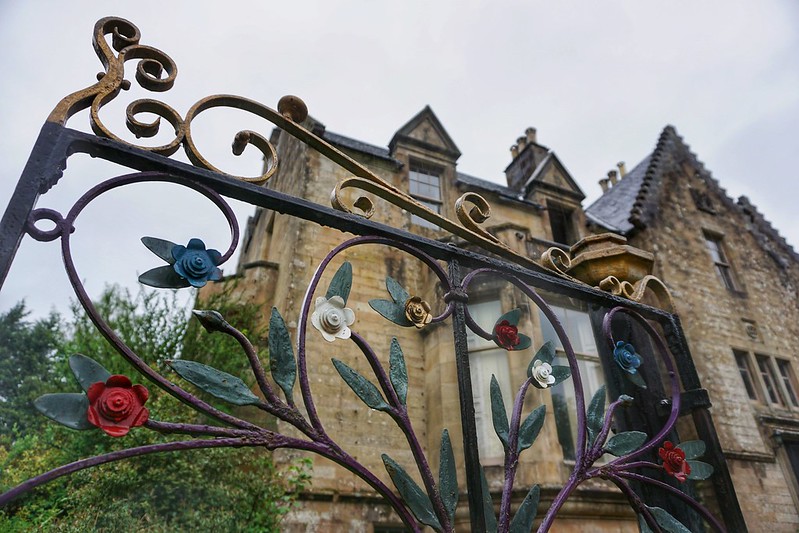
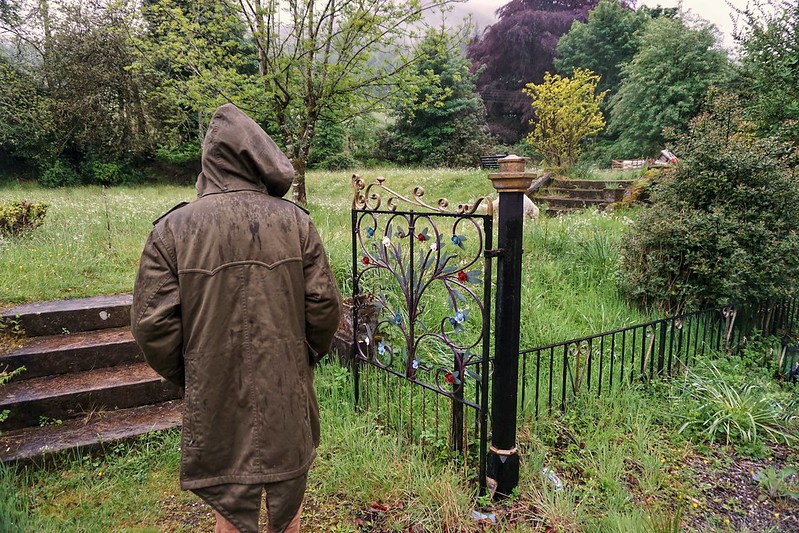
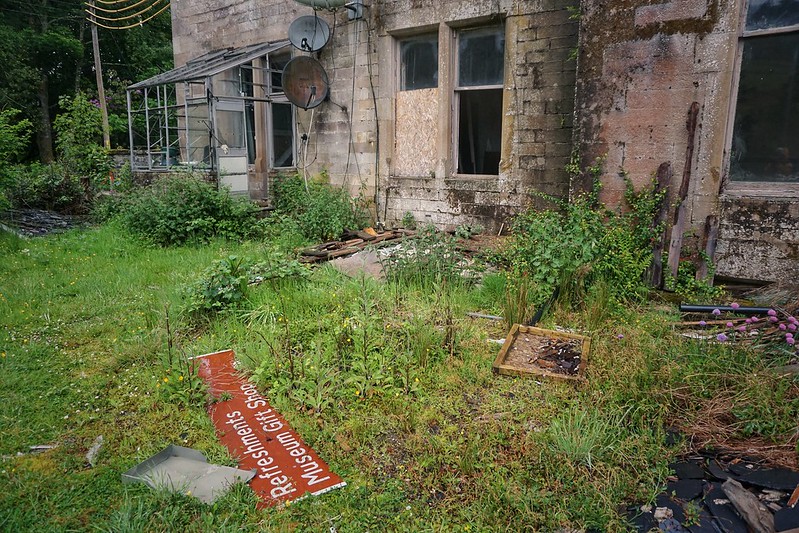
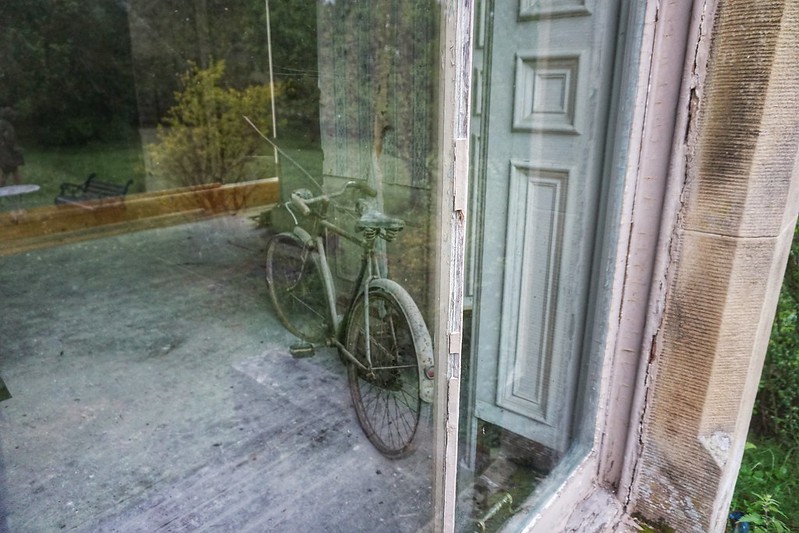
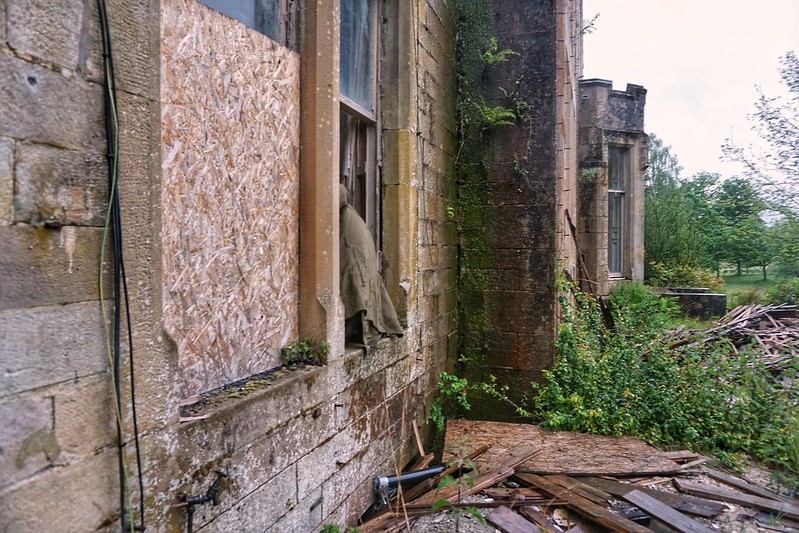

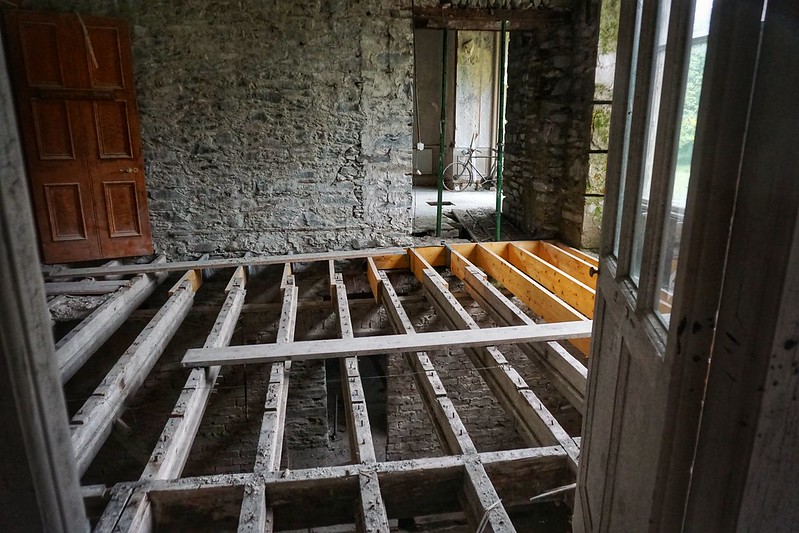
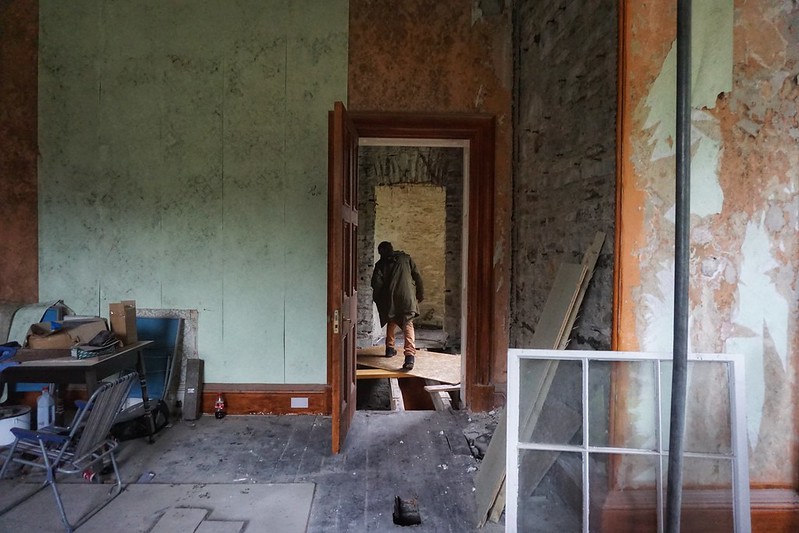
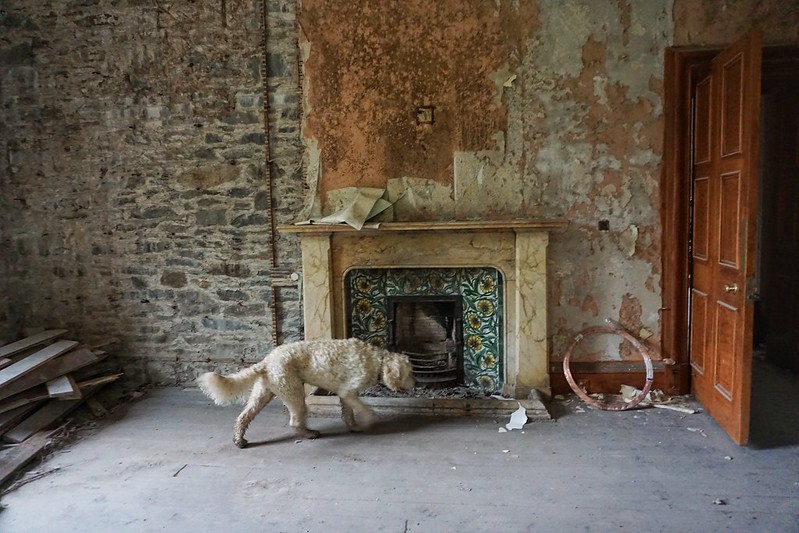
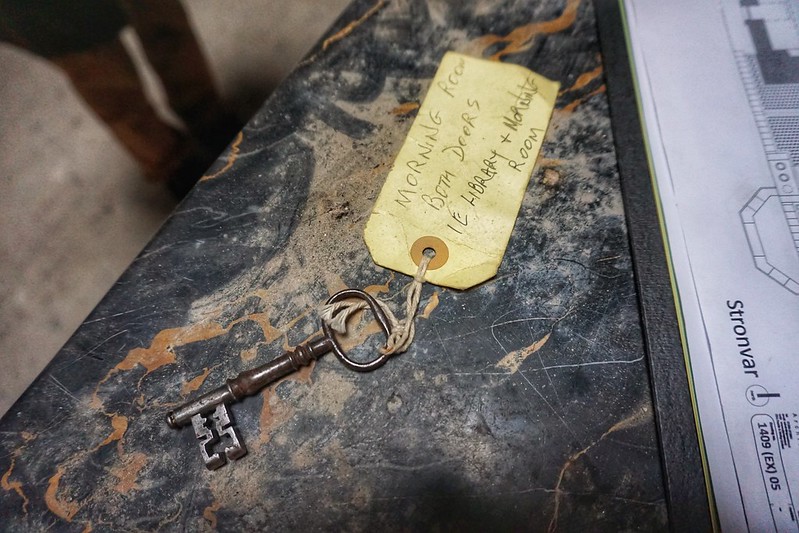
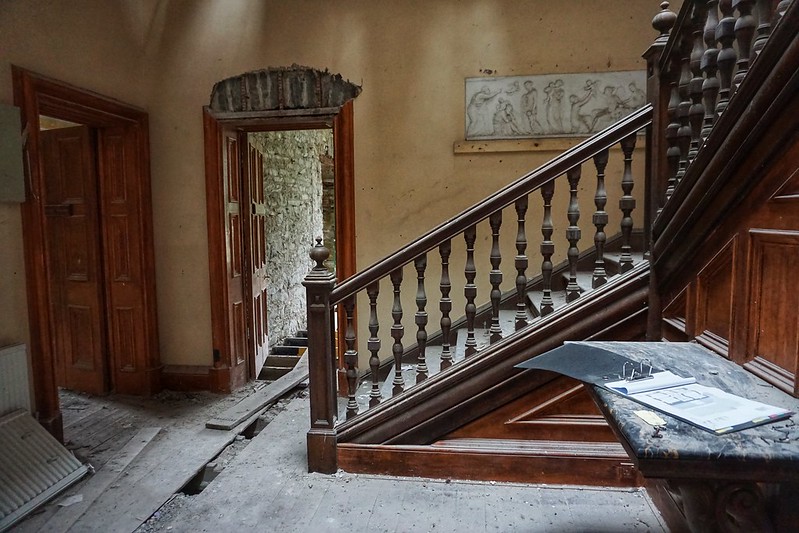

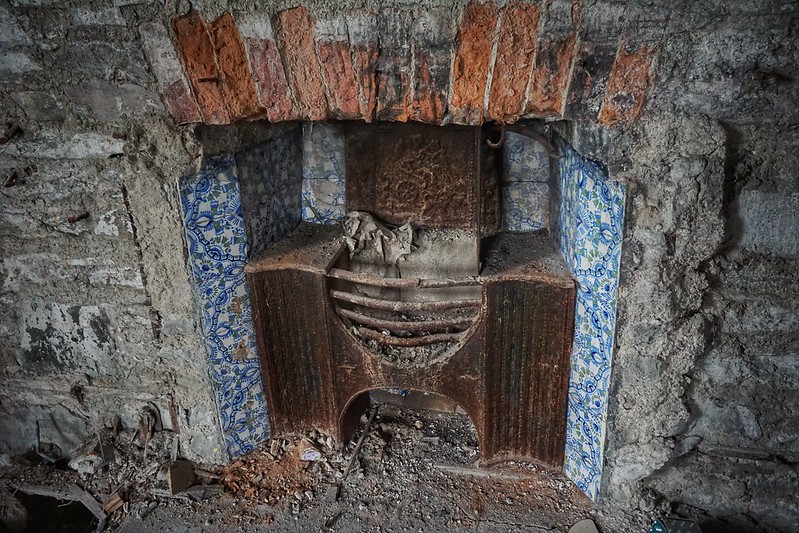

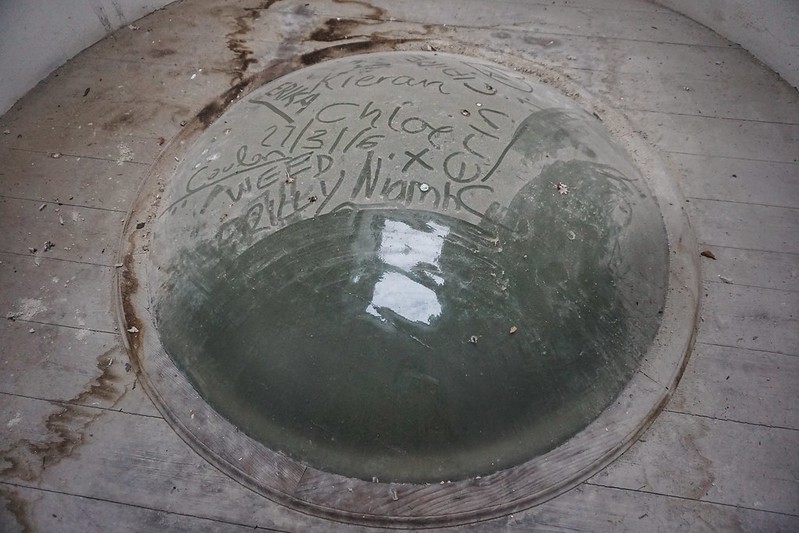
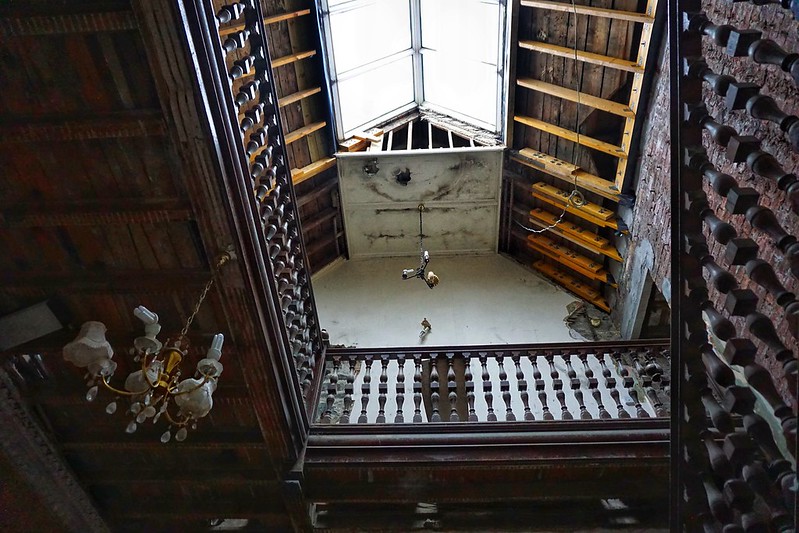
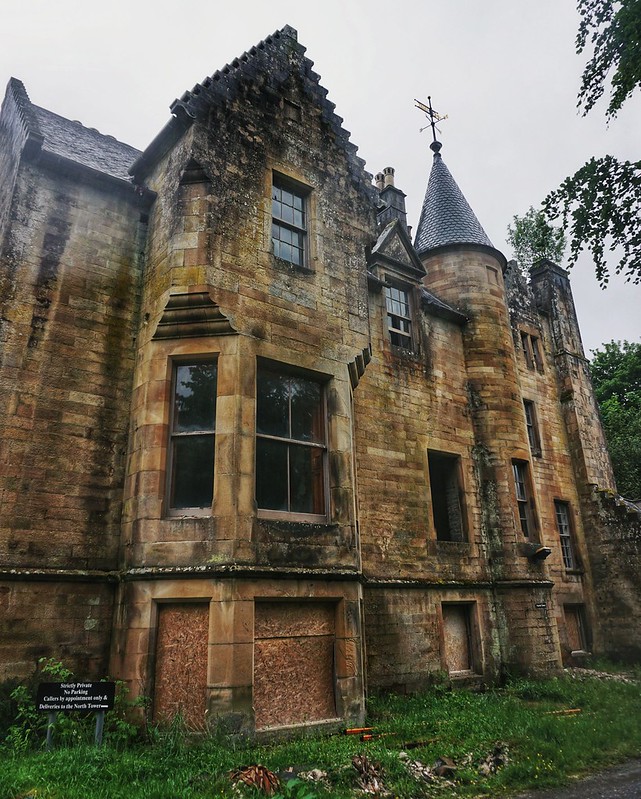
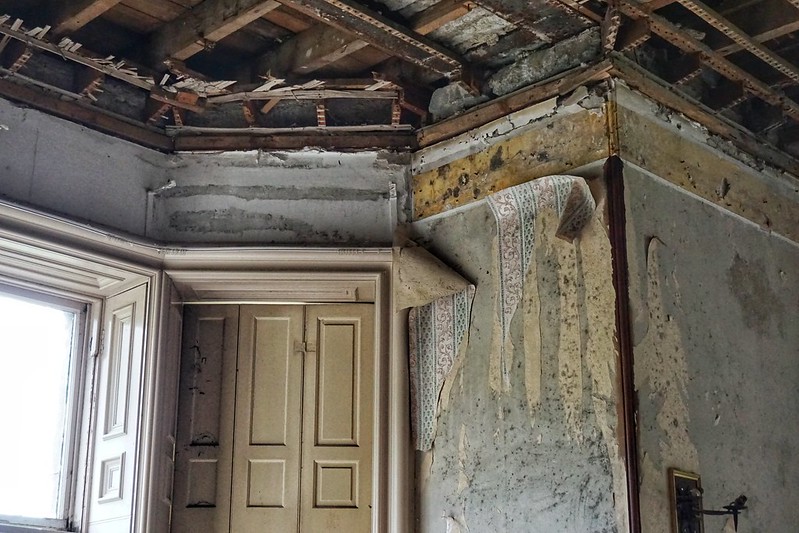
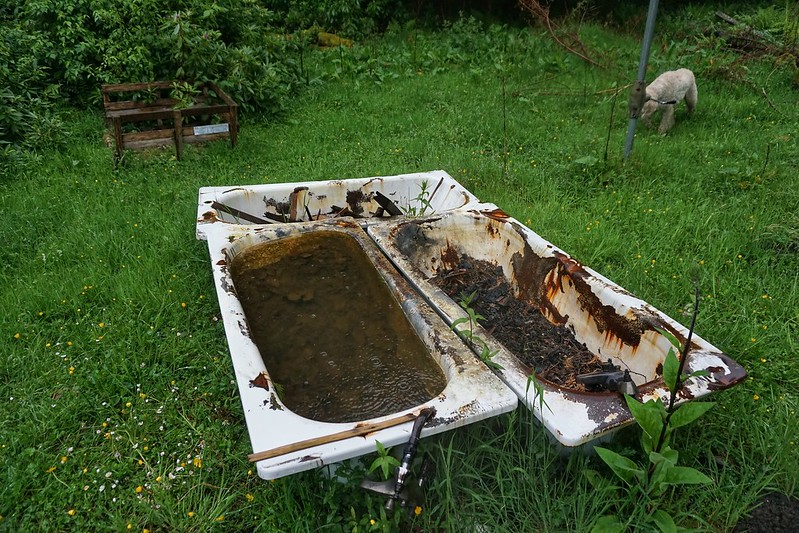
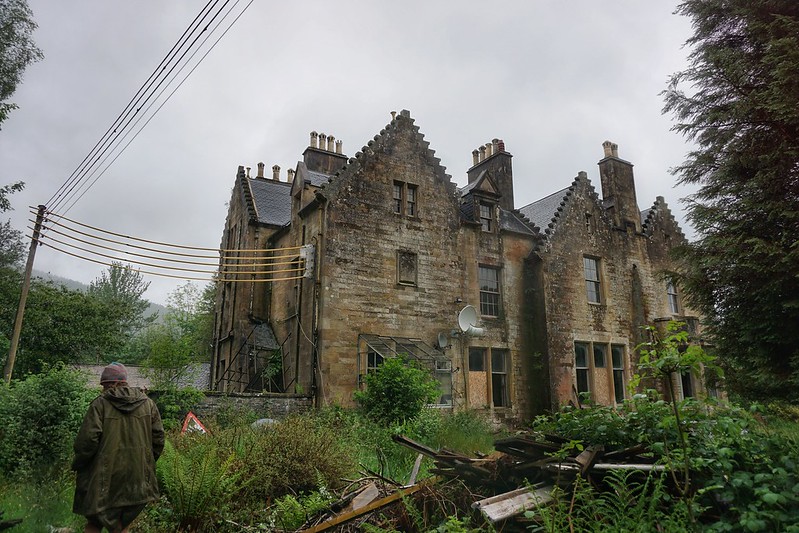
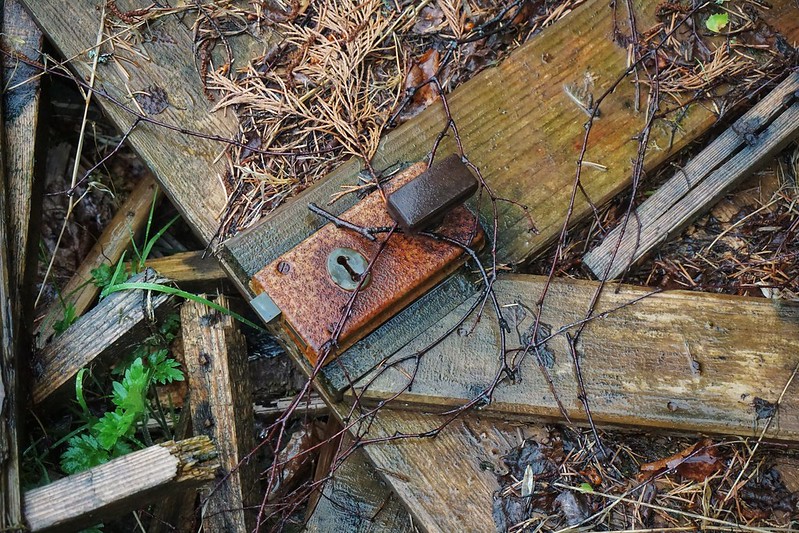
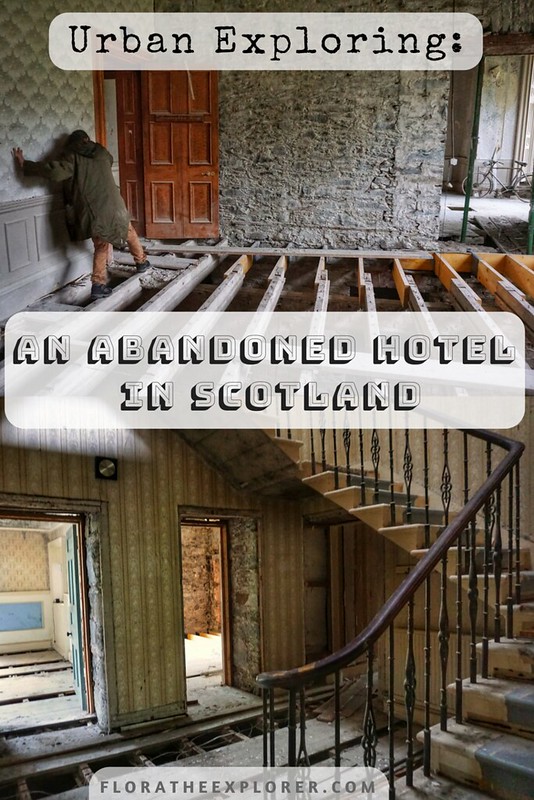
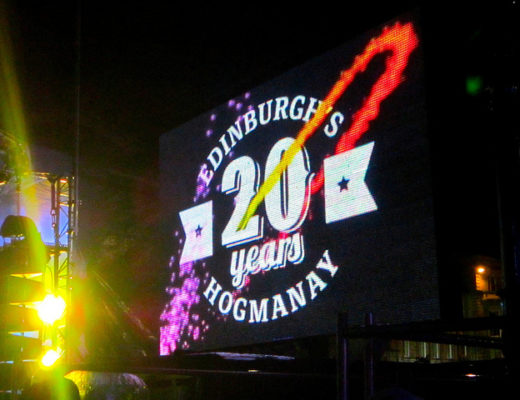

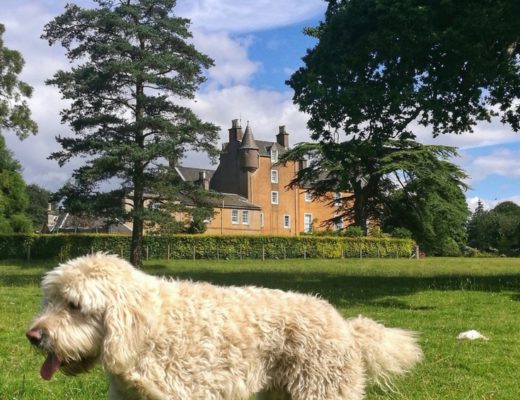
17 Comments
Julie
June 14, 2018 at 2:20 pmI am so jealous! I have always wanted to do urbex but have never had the courage or opportunity to try it!
Flora
June 14, 2018 at 3:03 pmAhh Julie, I know what you mean! Unfortunately I think both those aspects need to be in alignment before you get to try it out :p There seem to be so many well-known urbex places around though – maybe visit some of those to get your courage up?
missb
June 20, 2018 at 12:35 pmFirst time I’ve heard of UrbEx. It’s a pity that old hotel was not preserved for its history/heritage.
Flora
June 26, 2018 at 10:05 amYep, it’s a real shame – although it seemed like the owners tried everything they could to look after the building. Fingers crossed they’ll be able to restore something of it eventually!
Amanda Carnagie (@AmandaaaCar)
June 20, 2018 at 5:12 pmWow, what a beautiful building. Such a shame to see it wither away. Wish I could say I had some family ties to the “Carnegies” who owned it. 🙂
I did a lot of urban exploring when living in Detroit. It blows my mind to visit Detroit today and see all those old abandoned buildings I used to explore, renovated and transformed into new restaurants and storefronts.
Maybe that gives me hope that perhaps one day Stronvar house can be returned to its former glory too.
Flora
June 26, 2018 at 12:15 pmAhh that would be amazing if you had a familial connection to the house!! I can’t imagine what it’d be like to come back in a few years and see it completely restored. It must have been so weird to see those buildings in Detroit!
Sarah
June 25, 2018 at 7:17 pmYour pictures are soo amazing! I loved this article.
Flora
June 26, 2018 at 10:17 amAww thanks so much Sarah! I’m glad you like them 🙂
www.kessington.co
September 28, 2018 at 9:49 pmHi – we are a builder and are now at end Sep 2018 are 16 weeks into a restoration of this amazing property on behalf of a Swiss client team. I can send some photos as starting to take shape and stone cleaning/repairs underway with new windows being fitted in 6 weeks time.
Craig
gautier
October 8, 2018 at 7:40 pmyes please, do you have photo of the restoration
Flora
January 9, 2019 at 5:23 pmHi Craig, thanks so much for letting us know about the renovation project! That’s really exciting 🙂 I’d love to see some photos when you’ve got some!
gautier
February 4, 2019 at 7:47 pmi stay there for 1 week back in 2010, i have many photo with my family, it was already full of humidity! it’s a shame to see it abandonned , many flashback in it. hope the restoration will be great, the places were lovely, wih the rob roy graves near
Lynda
October 8, 2018 at 5:44 amYeah I went for a look yesterday made no attempt to enter the building as clearly it is being restored, so great to see someone is eventually takingcare of this fantastic building, cant wait to see the finished result
Flora
January 9, 2019 at 5:24 pmSuch great news, Lynda! Hopefully you’ll be able to visit Stronvar when it’s fully restored 🙂
daisyashcroft
January 21, 2019 at 1:09 pmMy parents actually applied to buy Stronvar House a few years ago and were planning to renovate it as a Scottish wedding venue but the sale fell through due to various issues on both sides. Such a shame because it’s the most beautiful building with amazing potential, all those beautiful features. I can’t believe it’s been completely abandoned now 🙁
Flora
February 19, 2019 at 4:02 pmWow Daisy, that’s so interesting! It’s a real shame they couldn’t purchase it in the end – although from a comment above, it looks like someone else has been able to finally begin the renovations! Fingers crossed it all works 🙂
Jerin John
September 21, 2024 at 4:13 amThe pictures are so beautiful! I loved this article.